How Is an Easy Walk Harness Correctly Attached
- This post contains affiliate links. Read more here.
- Not a substitute for professional veterinary help.
Harnesses are always my favorite choice for walking a dog. Attaching your leash to a collar puts unnecessary tension on the neck which, especially for little dogs, can lead to health problems like a collapsed trachea.
But don't let anyone tell you that all harnesses are equal! They're not—especially if you have a dog that pulls on leash. Let our guide help you navigate the best harness for your dog.

5 Types of Dog Harnesses and How They Work
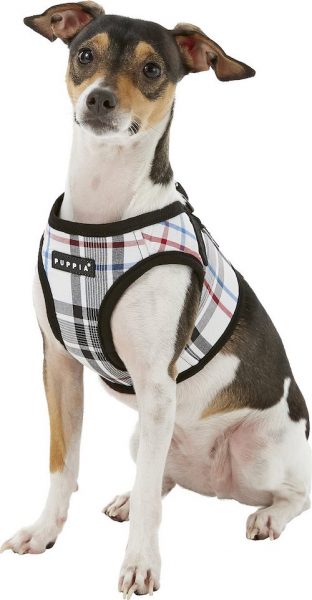
The vest harness is my favorite for dogs that don't pull. If your dog is a puller, skip this section and go straight to the anti-pull harnesses below.
I prefer the vest style, like this cute plaid vest pictured from Puppia, over the webbed harnesses because they fit comfortably like a piece of clothing and will be less likely to chafe under the armpits.
Shop on Amazon Shop on Chewy
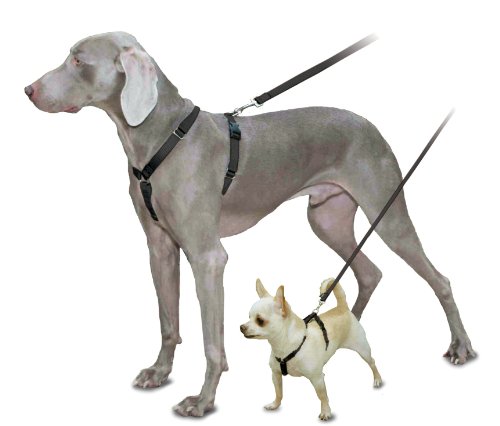
If you'd rather use a webbed harness like the Sure Fit Harness pictured here, it will work best if your dog isn't a puller. Really, there's no one brand that's all that much better than any other. Regardless of what you choose, the harness should be snug but still allow you to fit the width of two fingers between it and your dog's body.
Shop on Amazon Shop on Chewy
Most harnesses clip to a leash at the back of your dog's neck or further down their spine. This works well for some dogs, but if you have a puller, clipping your leash in the back will cause the dreaded "opposition reflex" to kick in.
This natural reflex causes a dog to want to push against any pressure he feels pulling him in the opposite direction. A harness that clips at the back, such as the vest harness above, encourages your pup to get in touch with his inner sled dog, which does not exactly result in a nice, relaxing walk. Clipping the leash at the chest helps to get around the "opposition reflex."
Now instead of feeling a pull, the dog feels a sort of barrier when he tries to push forward, which slows him down. I find this to have a downright magical effect on a pretty large percentage of dogs; you put on an anti-pull harness and suddenly your dog walks beautifully on the leash. Some examples include the SENSE-ation, the Easy Walk, and the Wonder Walker Body Halter, a Seattle-made brand available at NW retailers like Mud Bay and All the Best Pet Care.
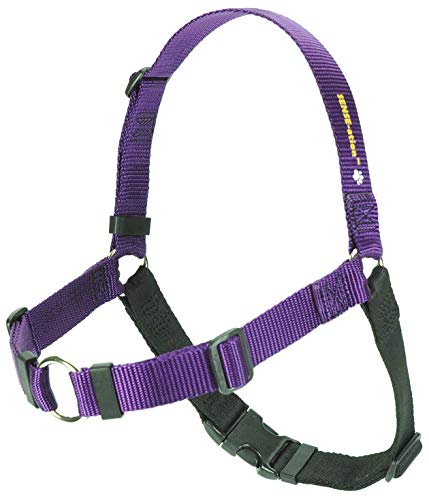
For pet parents with tuggers, this anti-pull harness will be a big improvement over walking your dog on a collar or back-clip harness.
Shop on Amazon

The anti-pull harness doesn't teach your dog anything, but it does manage their walking abilities. Don't be fooled by its ability to mask your dog's pulling; if you try walking them on a collar or back-clip harness after some time on the anti-pull harness, you'll find they pull just as hard as always.
That is, unless you're working on walking training in addition to using the anti-pull harness.
Shop on Amazon Shop on Chewy
4. The No-Pull Dog Harness With Front and Back Loops
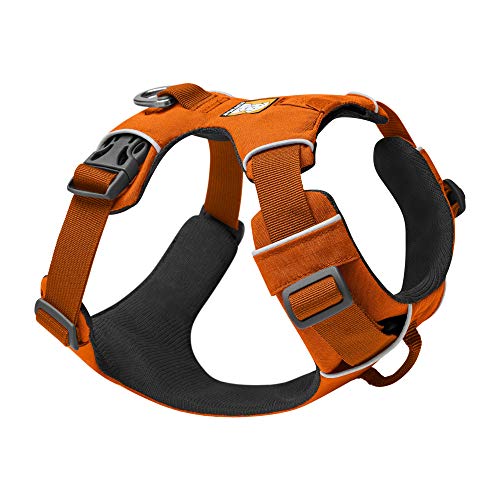
Some harnesses, such as the Ruffwear Front Range Harness pictured above, have loops or clips on both the front and the back. Because these harnesses are webbed (vs. a soft vest style) you'll want to watch carefully for any chafing or hair loss that may occur under the armpits. Always remove the harness when your walk is over.
The anti-pull harness can fit awkwardly on some dogs, hanging down low at the front of the chest even after you've adjusted the straps. To get around this, hold the loop of the harness to the loop of your dog's collar, then clip the two together with your leash.
Shop on Amazon
The head halter—most commonly branded as the Halti or the Gentle Leader—is a great option for reactive dogs, very strong or large dogs, dogs being walked by children or adults with limited strength, or dogs that pull for whom the anti-pull harness didn't make much of a difference.
The head halter works on the same principle as the halter of a horse: when you have control over the most sensitive part of your dog's body, you don't need to use much force. It slides over the nose, fastens behind the ears, and attaches to a leash beneath the chin. It is not a muzzle! Your dog will still be able to open his mouth and even carry a ball.
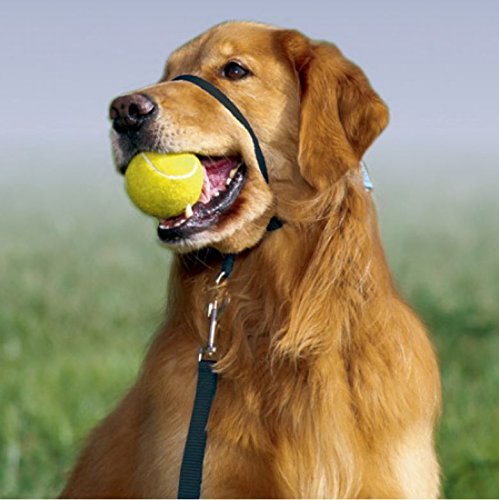
There is one major flaw with the head halter, however: very few dogs actually like the thing when they first encounter it, because it feels awkward and restrictive.
You'll have a much easier time getting your dog to comfortably wear the halter if you introduce them to it slowly, desensitizing as you go. If you put the halter on from day one and attempt to walk your dog with it, they'll most likely spend the whole time trying to get it off and, once they dislike it, it'll be much harder to get your dog to change their opinion.
Shop on Amazon Shop on Chewy

Start by teaching your dog that wonderful things happen when the halter appears (i.e., pulling it off a shelf or from behind your back and immediately rewarding your dog with praise and treats or play).
When they start to enjoy the appearance of the halter, you can begin to slowly place it on them, beginning by sliding it over their nose and rewarding them over and over until they're comfortable, then progressing to fastening it behind the ears, attaching the weight of the leash and, eventually, taking your dog on a walk.
Shop on Amazon Shop on Chewy
For more about finding the right dog harness for you and your dog, check out one of the articles below.
- Your Complete Guide to the 9 Best No-Pull Dog Harnesses
- The Best Dog Training Harnesses, Collars, and Leashes
- How to Measure Your Dog for a Harness, Clothes, and Costumes
- The Best Dog Harnesses for Every Kind of Dog
- How to Harness Train Your Dog
Kiki Kane is a canine chef, professional blogger, and lifelong animal lover owned by a Frenchie-Boston mix named Bea Pickles and a geriatric kitty named Mogwai. As a dog chef and member of Rover's Dog People Panel, she creates original dog-friendly recipes for the web series Kiki's Canine Kitchen.
How Is an Easy Walk Harness Correctly Attached
Source: https://www.rover.com/blog/professional-dog-trainers-guide-right-dog-harness/